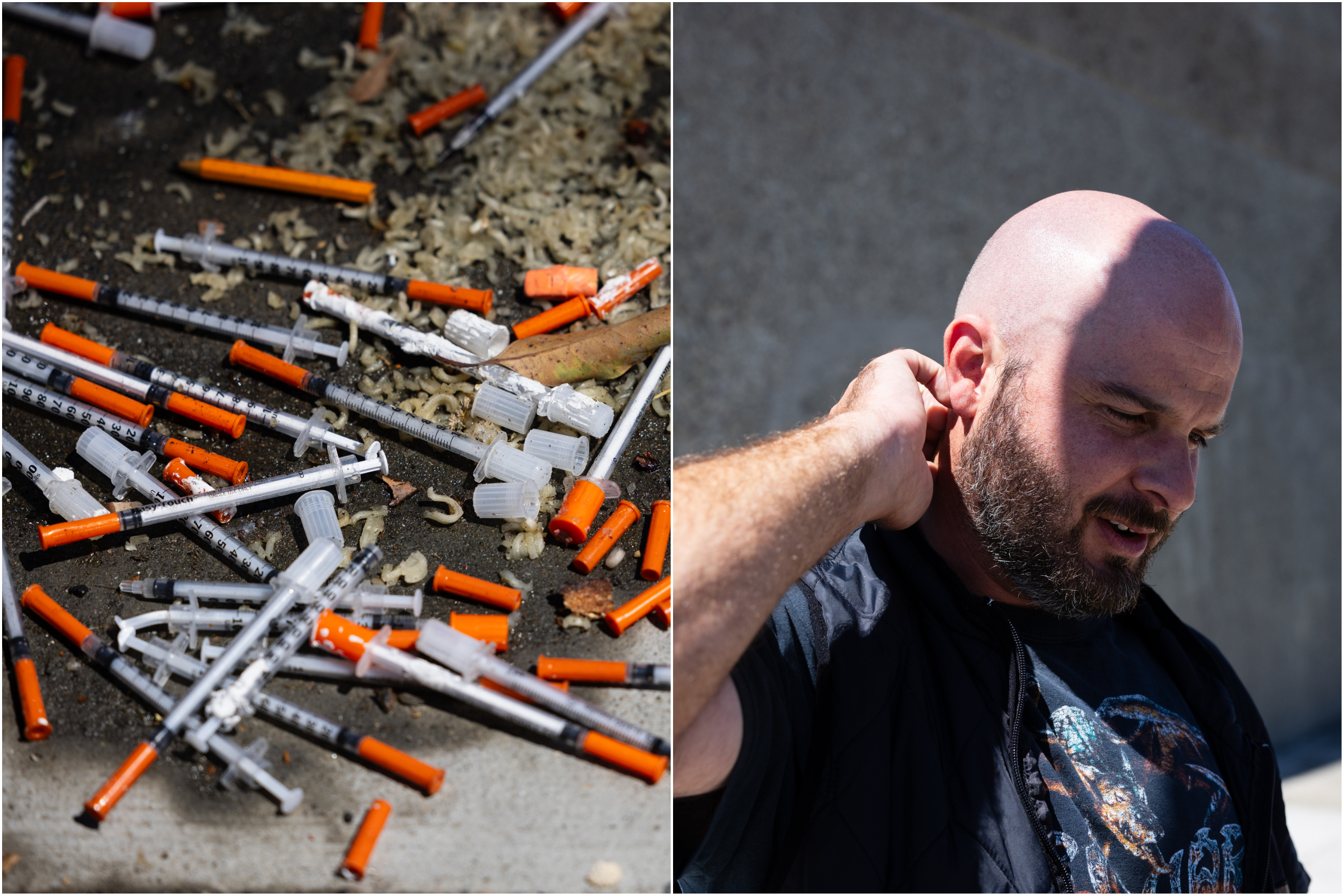Thrasher magazine owner Tony Vitello has spoken out after piles of used needles and garbage have been dumped outside the skateboarding magazine’s offices every day for months.
Vitello said the company offices in the city’s Bayview-Hunters Point neighborhood are repeatedly targeted with illegal dumping. On Monday, a huge pile of used needles appeared outside the offices at the corner of Underwood Avenue and Ingalls Street.
By Thursday morning, despite 311 requests to move the hazardous medical waste, the needles remained outside the building.
“[There’s] noodles mixed in with this stuff, there’s a large TV and then just kind of like bags of just general trash,” Vitello said.
After reporting the syringes Monday, he said the TV and a couple of other bags of trash were picked up, but the syringes were left behind.
‘A Dumping Ground Every Day’
“At the same time, this is every day,” Vitello said. “It’s a dumping ground every day. There’s a fatigue with just calling things in.”
Eli Augustine provides maintenance for Thrasher Magazine’s building and has taken it upon himself to clean the street outside of feces and hazardous waste before when the city has been slow to respond.
“He shouldn’t be going anywhere near needles and syringes,” Vitello said. “He shouldn’t be cleaning up other people’s excrement. We invest into this neighborhood looking halfway decent. It’s dehumanizing to even consider making him clean up.”
Vitello said Thrasher has been in the area since 1986 and that he feels vital resources are directed to other neighborhoods ahead of Hunters Point.
“[The Tenderloin] is more centrally located,” Vitello said. “It’s in the line of sight of City Hall. They don’t want to look the way it does, oftentimes, I feel like, because it’s more visible to people. It’s not visible to people out here, except for the people that live here.”
“What are people to think when those syringes are laying out there in their neighborhood and don’t get picked up for over 48 hours?” Vitello asked. “What do they think that the city thinks about them and their area?”
The issue isn’t unique to Vitello’s offices in the area. A single Bayview street corner had the highest number of 311 calls related to human or animal waste last year; many of the calls appeared to be about the same issue, according to 311 data. Nearly every day, workers for a nearby restaurant at the same intersection independently power-wash an alcove outside the eatery that is often used as a toilet, Department of Public Works officials said.
The neighborhood also lacks a community benefit district, a nonprofit neighborhood organization that provides residents cleaning and community services. These groups have been credited with bolstering cleanliness efforts—including needle pickups—in such neighborhoods as the Tenderloin and SoMa.
On Thursday afternoon, Department of Public Works spokesperson Rachel Gordon told The Standard that a crew had visited the intersection, calling it a known dumping spot.
Gordon said much of what gets found is from some area businesses or from renovators or basement-cleaning, with some areas near state parkland seeing more construction debris. She strongly encouraged residents and visitors to call 311 to loop in the department’s proactive Bayview dumping-run crew, who have increased their runs to five days a week from two to three days.
“We don’t have street cleaning crew on every block every day. It’s a large area. If there’s a 311 request, then we can know to go and get there,” Gordon said.
“That’s why contacting us through 311 is really important. Proactive, we don’t get to every hotspot every day. Some are addressed once a week, two to three times a week, depending on where and what.”
She estimated that proactive Bayview dumping patrols cost the city about $2 million a year, and have recovered 373 tons of trash in a year, or more than a ton of trash per day.
What makes Vitello most upset is his sense that dumping appears to breed more dumping.
“People act and react accordingly based on what the landscape looks like, the lay of the land,” Vitello said. “When they see needles and they see a bunch of trash and then they see a place treated like a garbage dump, they’re more likely to treat it like a garbage dump themselves.”
